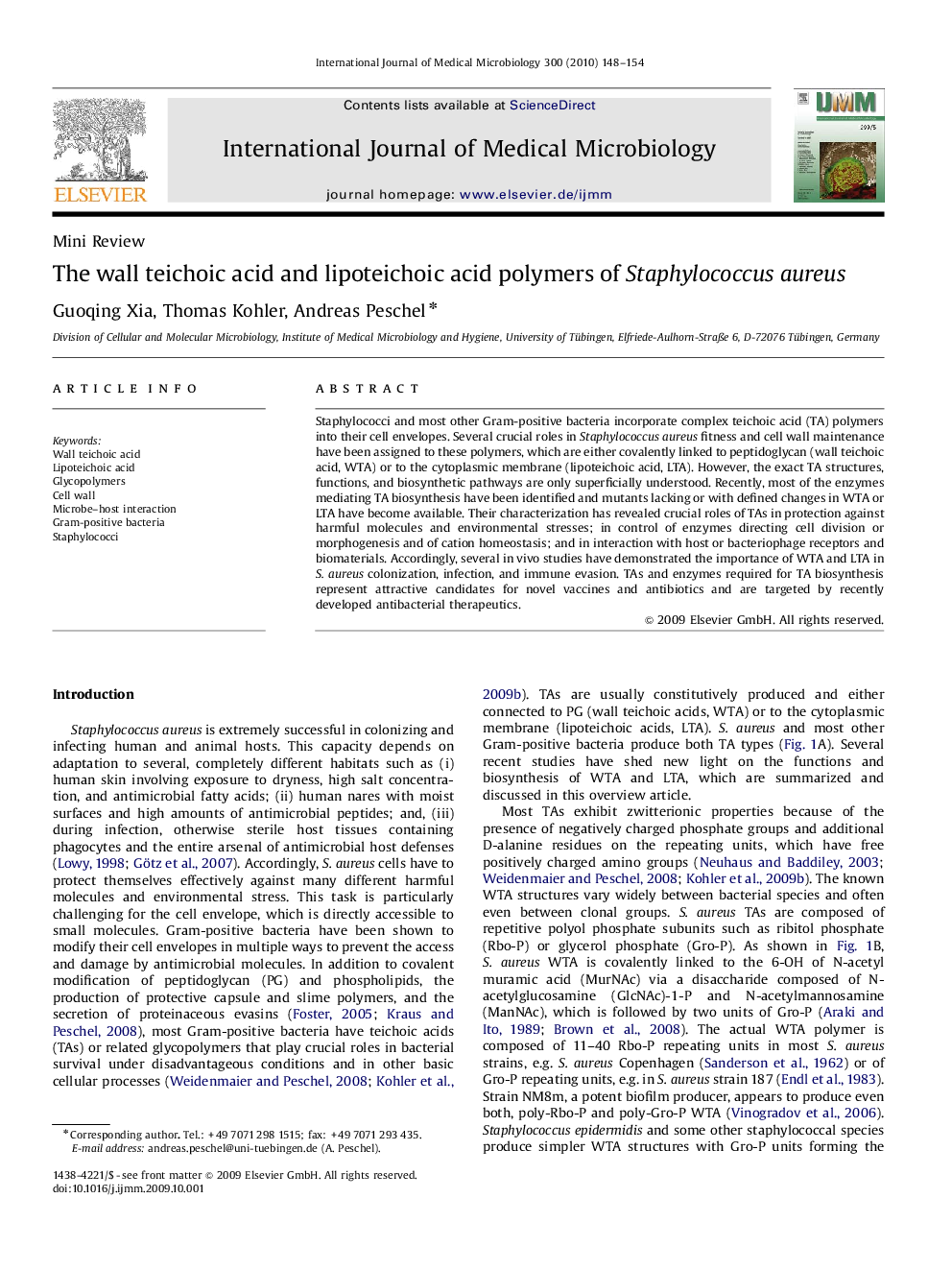| Article ID | Journal | Published Year | Pages | File Type |
|---|---|---|---|---|
| 8386204 | International Journal of Medical Microbiology | 2010 | 7 Pages |
Abstract
Staphylococci and most other Gram-positive bacteria incorporate complex teichoic acid (TA) polymers into their cell envelopes. Several crucial roles in Staphylococcus aureus fitness and cell wall maintenance have been assigned to these polymers, which are either covalently linked to peptidoglycan (wall teichoic acid, WTA) or to the cytoplasmic membrane (lipoteichoic acid, LTA). However, the exact TA structures, functions, and biosynthetic pathways are only superficially understood. Recently, most of the enzymes mediating TA biosynthesis have been identified and mutants lacking or with defined changes in WTA or LTA have become available. Their characterization has revealed crucial roles of TAs in protection against harmful molecules and environmental stresses; in control of enzymes directing cell division or morphogenesis and of cation homeostasis; and in interaction with host or bacteriophage receptors and biomaterials. Accordingly, several in vivo studies have demonstrated the importance of WTA and LTA in S. aureus colonization, infection, and immune evasion. TAs and enzymes required for TA biosynthesis represent attractive candidates for novel vaccines and antibiotics and are targeted by recently developed antibacterial therapeutics.
Keywords
Related Topics
Life Sciences
Biochemistry, Genetics and Molecular Biology
Biochemistry, Genetics and Molecular Biology (General)
Authors
Guoqing Xia, Thomas Kohler, Andreas Peschel,
